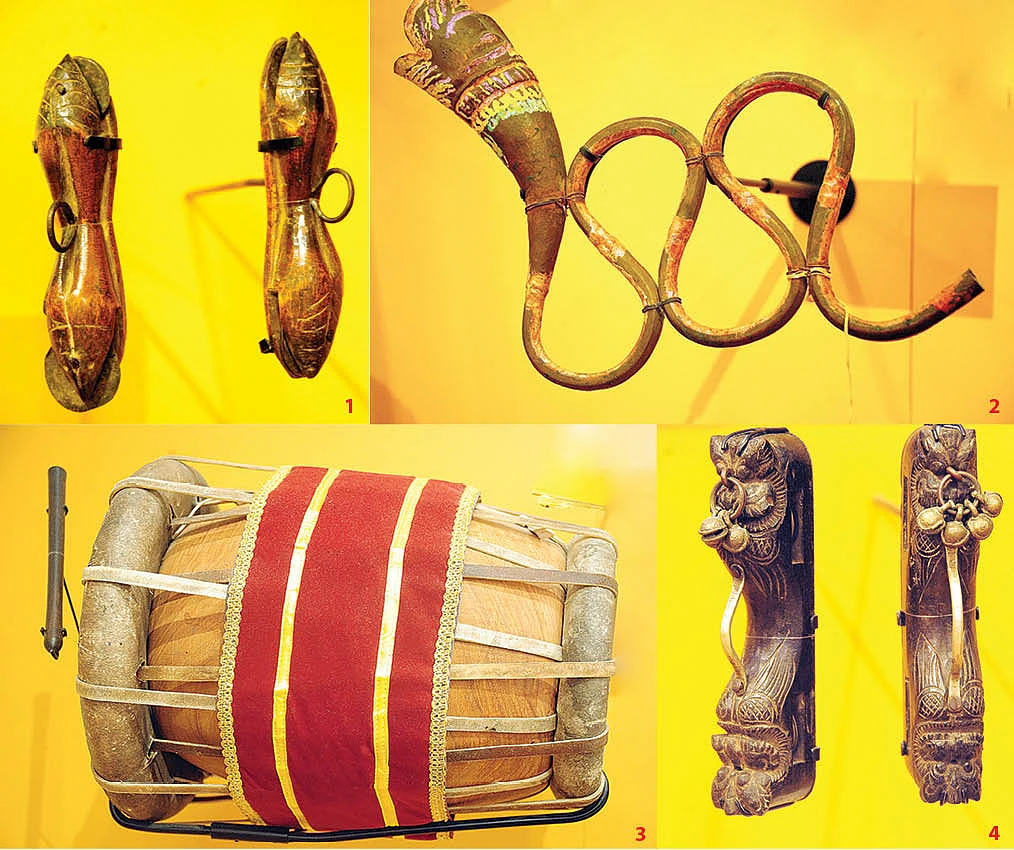The sounds of music in Phoenix
In the Musical Instruments Museum in Phoenix, Arizona, musical exhibits from around India include nagphani from Rajasthan, surbahar from WB, tavil from Chennai and khamak from Eastern India

It is a snake. Its mouth agape; its body coiled in the shape of petals; its skin tidy and brown; its tail square at the end. There in no venom in this snake’s pit. It does not rattle. It never hisses. This snake has a hollow heart and lets out a mesmerising sound. But only if someone blows into the open end of its square tail.
This snake hangs by its belly in Musical Instruments Museum (MIM) in Phoenix, Arizona. Called Nagphani, this snake-shaped wind instrument borrows its name from the hood (phani) of a nag (snake). Linked to Lord Shiva and found mainly in Gujarat and Rajasthan, it is commonly associated with tantrik or mantrik rituals.
Nagphani is not the only musical instrument that makes a rhythmic sound in MIM, the world’s only global musical interments museum. MIM has a collection of 13,600 musical instruments and associated objects from nearly 200 countries and territories. At any given time approximately 6,800 of them are displayed. Spread over approximately 200,000 sq.ft with two floors of light-filled galleries and built at a cost of over $250 million, MIM opened in April 2010.
In MIM, India finds a place of prominence with musical exhibits from around the country displayed in the India Gallery. As soon as one walks in, there’s the photograph of a bharatnatyam dancer in blue amidst a montage of music-related photographs from around the world. Sangeet aatma ki bhasa hai (Music is the language of the soul) in Devnagari is emblazoned across white walls and black t-shirts.
Arranged according to geographical location on the maps, the India Gallery is on MIM’s second floor, with Pakistan, Bangladesh and Nepal being its geographica—and museum—neighbours. Instruments are bunched according to types and little white notes offer basic details of the artefact. In one corner is the Surbahar, a teak wood, silver, sambar deer antler and wire plucked lute.
Carved from wood to resemble a gourd resonator, the resonating chamber amplifies sound. The surbahar in MIM is from West Bengal and the maker is Damodar Adhikari. Though the invention of surbahar is generally attributed to Ustad Sahebdad Khan, recent research shows that Lucknow-based sitarist Ustad Ghulam Mohammed may have been the inventor.

Not too far away is the tavil (also called thavil). This double-headed barrel drum is made from jackfruit wood, buffalo skin, goatskin and is used in temple, folk and Carnatic music, often accompanying the nadaswaram. The tavil displayed in MIM has been crafted by Chennai-based A.R.Dawood & Sons.
Against a sunflower yellow background hangs khamak, one of the oldest musical instruments of eastern India. Resembling an ektara, this one-headed drum is commonly used by the Baul singers of West Bengal.
While the khamal, dholak, tabla, sitar and cymbals find a place in the India Gallery, the chaturangi stands in the Guitars from Around the World section on the ground level. A slide guitar, the chaturangi was designed by Indian classical guitarist Debashish Bhattacharya who also holds a patent for this musical instrument. To create this guitar, Bhattacharya altered the shape of a Hawaiian guitar and then added the front ‘chikari’ - the resonating string on sitar, sarod, veena and other classical instruments.
Colin Pearson, MIM’s curator for Asia, Oceania, and the Middle East, travelled around the world to pick musical instruments that tell the story of a particular nation and its culture. At MIM, beyond the instruments lie the absolute genius of the artists. The Artists’ Gallery features world’s famous singers and musicians including sitar maestro Pandit Ravi Shankar (1920-2012). There is a large coloured photograph of a smiling Pandit Ravi Shankar playing the sitar. On the floor is his personal sitar and a mannequin wears his white silk dhoti kurta and a brocade jacket. There is a framed photograph of the sitarist with George Harrison, the lead guitarist of the Beatles. Legend has it that the quintessential English band was so entranced by Pandit Ravi Shankar’s scintillating expertise in sitar that Harrison flew all the way to India just to learn the instrument straight from the maestro.
At MIM, the musical instruments hang silently in the galleries. But in their quietude lives music. Music so intangible that only the heart can understand its rhythm. Music is, as Ludwig van Beethoven said, a higher revelation than wisdom and philosophy. In Phoenix’s MIM, music is the only truth. Nothing else exists. Nothing else matters.
Follow us on: Facebook, Twitter, Google News, Instagram
Join our official telegram channel (@nationalherald) and stay updated with the latest headlines
